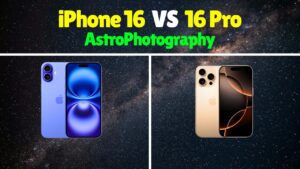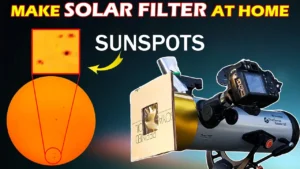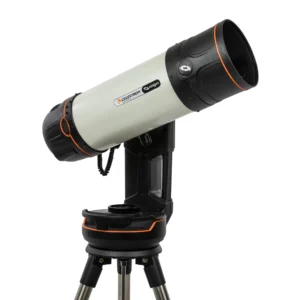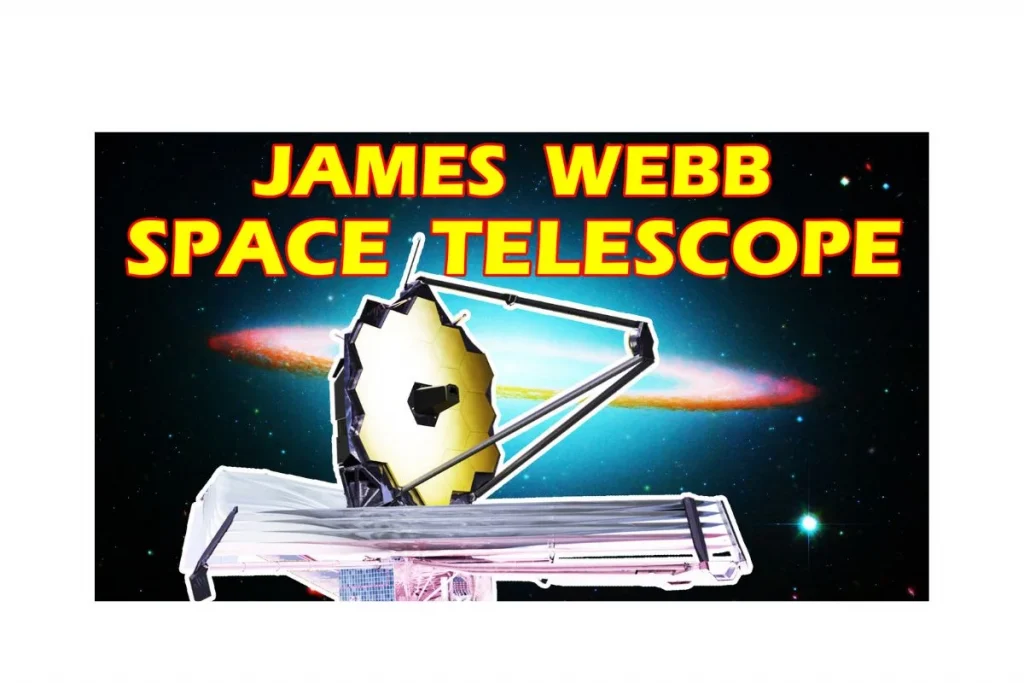
If you own a telescope, then you know ‘How important is the aperture of a telescope?’ This is true not only for the telescopes we use here on earth but also for the bigger telescopes we launch into space in lower earth orbit. This is one of the reasons the James Webb Space Telescope is needed.
While observing from the Earth, to avoid Earth’s atmosphere, scientists decided to place the telescopes in lower earth orbit (LEO). In LEO there is no distraction from the earth’s atmosphere. One of the best telescopes known to mankind is Hubble Telescope and it is in LEO.
This telescope launched in the 1990s and for the last 30 years, it has served us well. Because of Hubble, we found so many objects in the universe. Hubble unleashed a flood of cosmic discoveries that have changed astronomy forever. Hubble found that the universe is expanding & presence of dark matter. We were also able to see the farthest point in the past as long as 13.4 billion light-years away. Hubble also found out about forming planetary systems in the universe and so many things. Hubble’s aperture size was 2.4 meters. Though, it has a big aperture and is in the lower earth orbit. It still has some limitations because of its aperture size and its design.
To understand how Hubble works you need to know, “What exactly LIGHT is”?
When we say light, we usually think about the light coming from the Sun. In reality, light is nothing but electromagnetic radiation. We measure these radiations in wavelengths. These electromagnetic radiations occur on a wide range of wavelengths. Out of that wide range, very tiny parts of wavelengths come under the visible spectrum. Which we can see with our eyes. The remaining ranges of gamma rays, ultraviolet rays, infrared rays, etc. are invisible to human eyes. To see those wavelengths, we need a special instrument. Such as infrared goggles, a camera, or bigger aperture telescopes. Which absorbs most of the light.
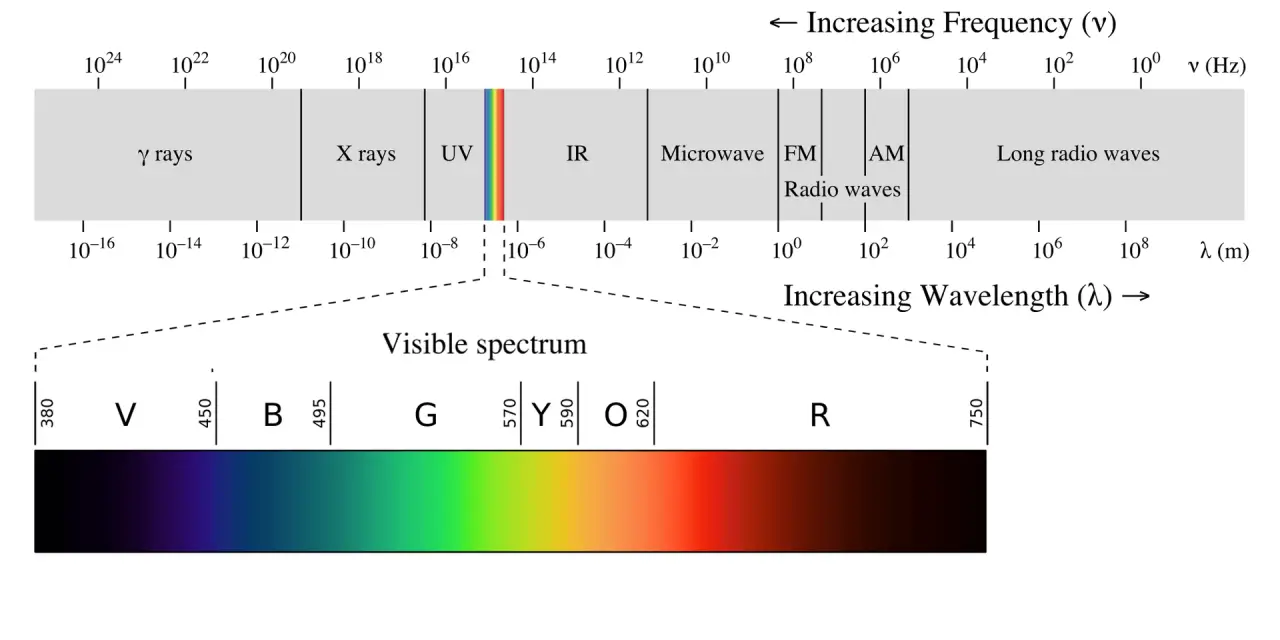
In its design, the Hubble has the ability to study visible and ultraviolet light (wavelengths). It also had some infrared capabilities to study infrared light. Hubble can observe a small part of the infrared spectrum from 0.8 to 2.5 microns. But its primary capabilities are in the ultra-violet and visible parts of the spectrum from 0.1 to 0.8 microns. If you look at the normal photo of “Pillars of Creation” taken by the Hubble telescope. Compare it with the same photo with infrared light, you’ll notice more details in the infrared photo.
In the normal photo, you can see the gas clouds but in its infrared version, you can see the stars hiding in those clouds. Stars and planets that are forming lie hidden behind dust clouds. These dust clouds absorb visible light. But, infrared light coming from these sources can penetrate through those dust clouds & reveal what’s inside.
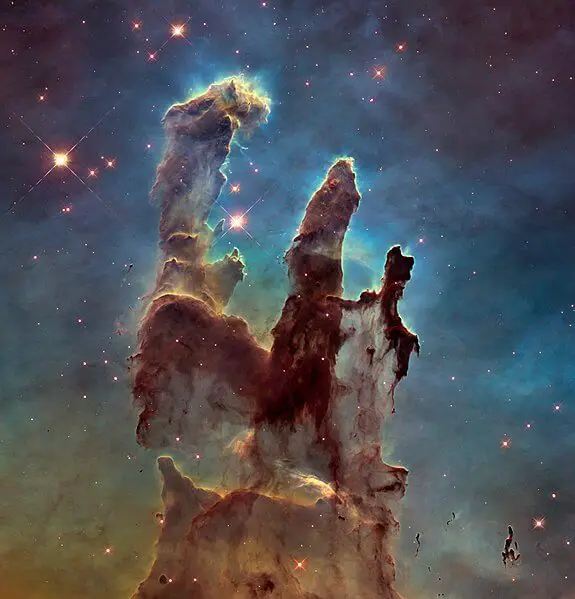
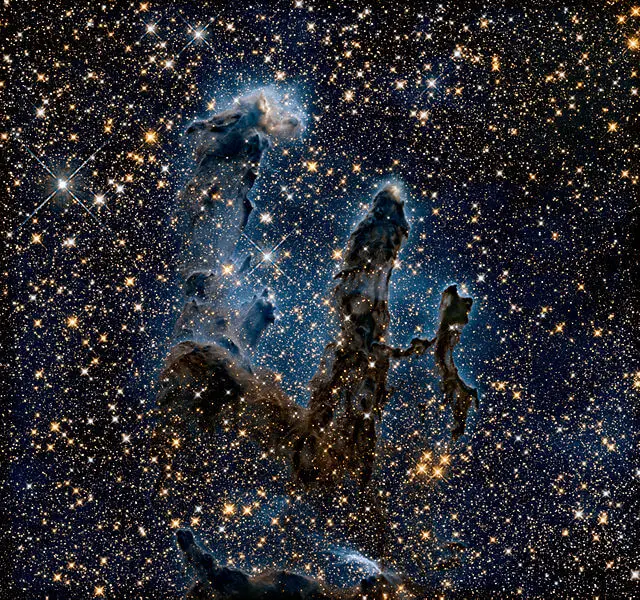
When light is coming from distant objects. When it reaches the telescope. Its wavelength stretched from gamma-ray to ultraviolet to infrared. This stretching of wavelengths is called redshift. The light is pushed from the ultraviolet to the near-infrared.
There are three types of infrared light. Near-infra-red which is 0.8 to 2.5 micron. Mid-infrared is between 3 and 25 microns and far-infrared is above 25 microns.
So to study those distant celestial objects in detail. We needed a bigger dedicated telescope that works with infrared light. Thus, the James Webb Space Telescope was created.
The early work of making this telescope started in 1996. At that time they named it as Next Generation Telescope. In 2002 they renamed it the James Webb space telescope. The short name used for this telescope is “Webb”. Originally, the telescope’s aperture was set at 8 meters, then it was changed to 6.5 meters. Webb will examine every phase of cosmic history. The first luminous glows after the Big Bang to the formation of galaxies. Formation of stars and planets to the evolution of our solar system.
To make the James Webb Space Telescope work scientists had to think in very innovative ways. One simple thing you can notice is the main mirror is not circular but hexagonal. It is composed of other hexagonal mirrors. This is because the hexagonal shape is almost circular. The smaller hexagonal mirrors fit together without gaps forming a bigger hexagonal mirror. Also, smaller hexagonal segments can fold which is perfect to fit the telescope in the rocket. If it were circular then there would be gaps between them and would be difficult to take it to space.
Before deciding on what kind of mirror to use on the James Webb Space Telescope. They built two test mirrors. One was with Beryllium and the other was with a special type of glass. After testing both the mirrors scientist zeroed down on the beryllium mirror. Beryllium is lightweight and strong. The most important is, that it can withstand a wide range of temperatures. As the James Webb Space Telescope will be in deep space. It will face less than -250 degrees temperature. Beryllium is the most suitable material for the telescope.
Another challenge scientists faced was to keep the large mirror cold. They designed the telescope to observe infrared light. Which will come from the first stars and galaxies in the universe. If the telescope’s mirror got hot, then it will give off infrared light. And the light coming from those distant galaxies will get lost. So, it is very important to keep the mirror of the telescope cold.
The telescope has 5-layer tennis court-sized sun shields. These sun shields will protect the telescope from an external source of light & heat. It will also protect from the heat emitted by the telescope itself. The sun shield is made from a special material that cools the telescope. This sun shield has one side that is hot and the other side that is cold. The temperature difference between the hot and cold sides of the telescope will be huge. You could almost boil water on the hot side, and freeze nitrogen on the cold side.
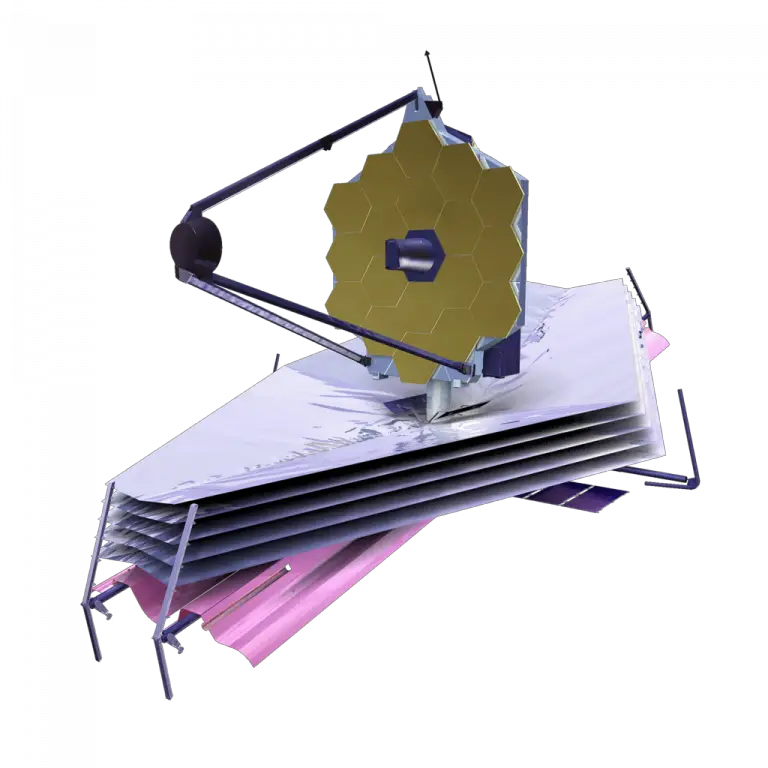
Additionally, it will be sent into deep space to increase its efficiency. It will also help to maintain the temperature of the telescope to -250 degrees. Lagrange point 2 (also known as L2) will be home to the telescope. Lagrange points are the points in the space where the objects stay in a steady position. At any Lagrange point, two bigger objects are exerting an equal amount of force on that point. So both forces get nullified and the object in the position remains steady. The distance between the moon and earth is 384,000 km. The distance between the earth and Webb will be 1.5 million km in the exact opposite direction of the sun.
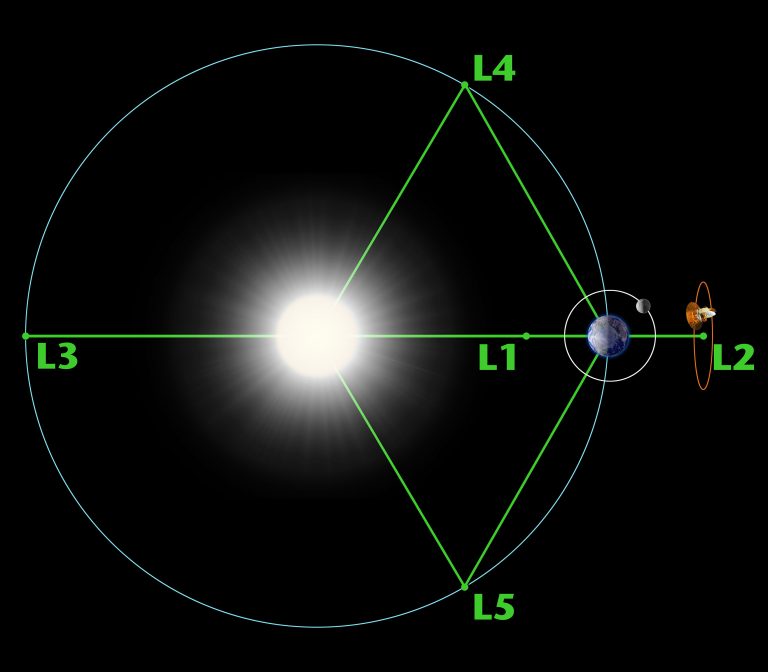

You might think if the telescope is so far away from the earth, then wouldn’t it take more than a year to orbit around the sun. In a normal scenario this will happen but here comes the beauty of L2. The sun and earth’s gravitational pull gets balanced out at L2. That’s why it will keep up with the earth as the earth orbits the sun. You can see that in the following animation.
At L2, Webb will orbit around L2 & not sit stationary. So it will need a little rocket thrust to keep it in the orbit in L2. The Sun, earth & Webb telescope will always be in a straight-line path. The telescope’s sun shield will be always facing the earth. The sun shield will block all the light and heat coming from the earth and the sun.
With the sun and the Earth in the same part of the sky. The Webb telescope will enjoy an open, unimpeded view of the universe. In comparison, the Hubble Space Telescope is in low-Earth orbit. Where it goes in and out of the earth’s shadow every 90 minutes. The earth blocks part of Hubble’s view during each orbit. It limits where the telescope can look at any given time. This will not be a problem with the Webb telescope. Another advantage of keeping the telescope at L2 is the ease of communication from the earth. As the telescope will be always at the same point in space. It will be easier to communicate continuously with the Webb through Deep Space Network (DSN).
How much James Webb Space Telescope has cost so far?
When the concept of this telescope surfaced in 1996 the budget for the whole project was $500 million. But this is space exploration, and every single thing we send to space has to go through rigorous testing. Because once you send it into space then repairing it is not a workable option. So, every single minute part of the telescope has to go through rigorous testing. Even if there is a small doubt, you need to re-invent things to make them work for the long term. So, from 1996 to 2010 the budget of the telescope has gone from $500 million to $6.5 Billion. Upon launch of the telescope, the project will cost more than $10 Billion.
What JWST will find?
James Webb Space Telescope will be able to look much deeper into the past beyond the point of the big bang. As we study planets and solar systems, we’ll learn how they were formed. We will get a much closer and deeper knowledge of the universe once this telescope will be working. We might also be able to find out ‘How life began on earth?’.
Scientists believe after the Big Bang. The chemical elements of life were first produced in the first generation of stars. We are here today because of them. The universe’s history when galaxies began to form is still unknown. There is a need to learn about how galaxies got supermassive black holes in their centers. We still don’t know whether the black holes caused the galaxies to form or vice versa. Also, if we want to know how the little planet earth came to be capable of supporting life. Then, we need to know what happened at the beginning and the James Webb space telescope will help to do that.
It might also help us to get an answer to a very old question “Are we alone in this universe?” This telescope is going to help us find out very exciting things about the universe.
Hope you learned something about JWST. If you enjoyed the article then please share it with your friends.

